
  
 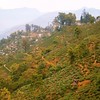 |
The tea slopes
of Darjeeling: Surely among the most beautiful places in the world.
The town of Darjeeling is around 2000 metres above sea
level; Barnesbeg tea estate, where I honeymooned, is about halfway down
the slope from there.
The climate is therefore somewhere between that of the
sweltering plains below, and the bright chill of the summits: Perfect
for growing oranges and tea, and for getting away from the heat and the
smog without freezing.
|
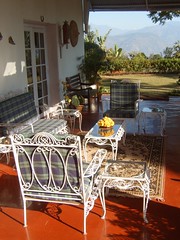 |
We stayed in the manager's bungalow, an obviously
colonial building; if not for the Kanchenjanga massif in the background
and the deities decorating the inside, it could easily be
an English country house. |
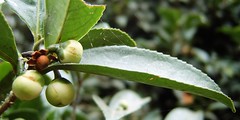 |
The tea plant, camellia sinensis,
is an evergreen
shrub, which will grow into a tree if left unchecked. In tea gardens,
it is always pruned to encourage new, tender growth, and keep it down
to the size of a bush. The buds and top leaves are plucked to make tea. |
 |
The flowers are sweetly aromatic, tender and rather
beautiful. They play no direct role in the tea-making process. |
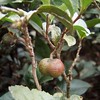 |
The seed pods are tough and rugged; the seeds are large
and round, like split wooden ball-bearings. |
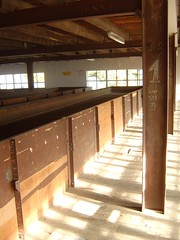 |
After picking,
the
tea is placed into troughs for carefully controlled wilting,
over the course of about half a day.
There are two
wilting processes at work here: chemical and physical. The physical
wilting and drying are controlled so that they roughly coincide with
the chemical wilting - the tea breaking itself down, a process which
improves the quality of the final product.
|
|
|
Enormous hot-air pipes speed the physical wilting
when the ambient temperature and humidity demand it. |
|
|
Great big rolling machines break down the cell walls of
the tea leaves, allowing oxidation to begin in earnest - the reaction
which makes the main difference between green, oolong and black tea.
After this, the leaves only take about an hour to
blacken as much as ordinary black Darjeeling tea demands.
The oxidation (often misleadingly referred to as
'fermentation') creates most of the caffeine in the final product, and
changes the flavour completely.
|
|
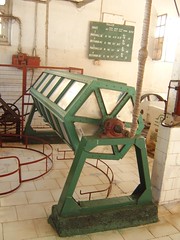
|
For green tea, a special machine quickly breaks down
the cell walls using steam, and dries the leaves out using a
combination of heat and centrifugal force.
The quick drying prevents oxidation from occurring, so
that green tea is much richer in antioxidant catechins than black tea,
and much lower in caffeine.
Darjeeling actually produces substantial amounts of
green tea (and also some white, and tiny quantities of oolong),
although it is far better known for its excellent black tea.
|
|
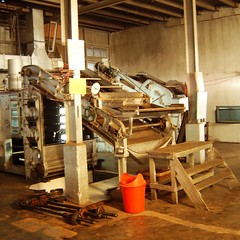

|
Once the black tea has been oxidised, mighty drying
machines evaporate most of the moisture out of it. |
|
|
The final step in preparing the tea, short of packaging
it, is to grade it by size. Gloriously elaborate machines achieve this
end. |
|
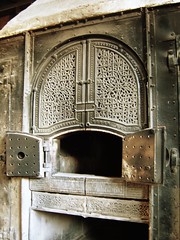
|
A grand old cast-iron furnace provides heat for the tea
factory. This was originally made in Britain, and shipped all the way
to India several decades ago. |
|
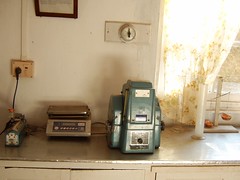
|
A hygrometer measures the amount of water in the
processed tea; it mustn't contain more than 3% moisture, or it is
liable to spoil.
What little moisture does remain allows certain chemical
processes to continue, very slowly; it always takes a while for the tea
to reach its destination, so the tea is processed with this in mind.
|